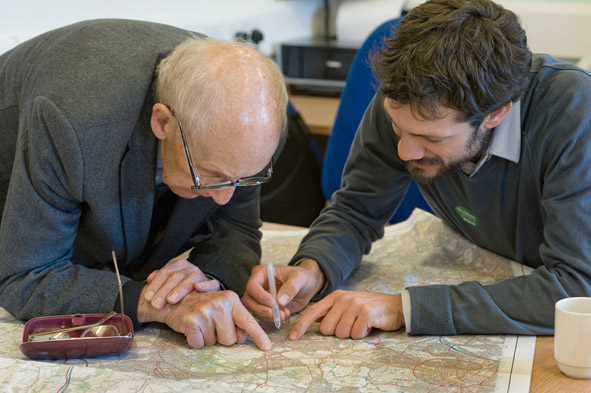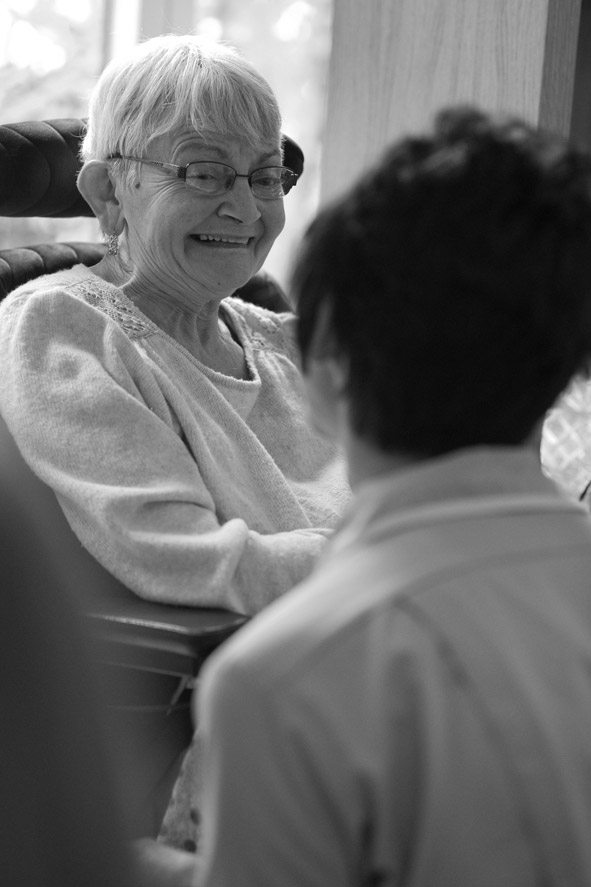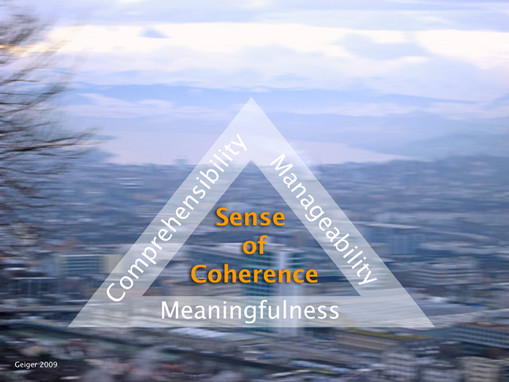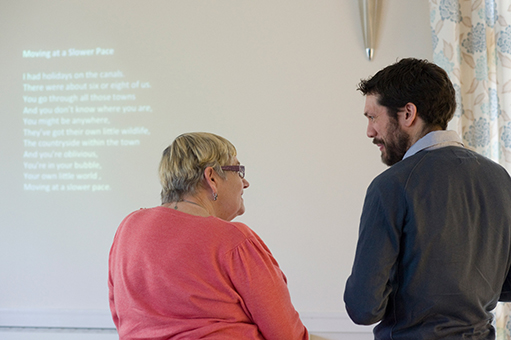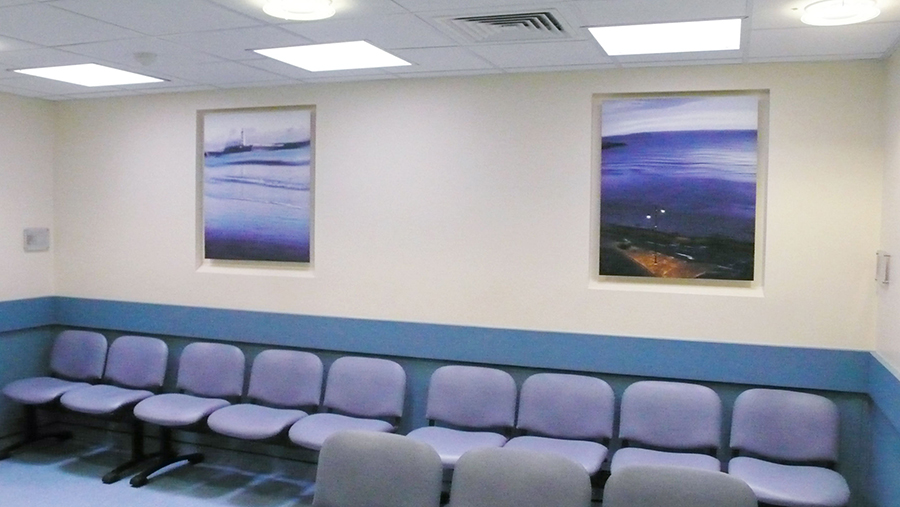So, what is Salutogenesis?
So, what is "salutogenesis?" Mother Theresa once said that she would not join a march against war but would join one for peace. Such a march, she argued, would not only empower people to end war, but also help them create the basis for peace. In her view, the process of creating peace was different from merely ending war. In the same way, the concept of salutogenesis implies that professionals - and not just health professionals - should work to create health rather than simply focusing on treating or preventing disease.[1]
Since my last blog about salutogenic design I have been offered the above description of salutogenesis which I thought I would share with you. In this second part of my blog post about salutogenesis I would like to focus on the role of art within this theory.
Using art to reinforce the salutogenic model
A salutogenic approach to healthcare design can be strengthened through the use of artwork. If an artwork in a hospital waiting area can provoke positive contemplation, offer a sense of beauty, reflect the calming quality of nature, it surely offers a sense of meaning. This is especially the case when the creation of artworks is carried out in collaboration with patients. I work with landscape, focusing on the experience of nature and people’s memories. For the last 10 years I have worked on healthcare projects and witnessed the positive effect of landscape and nature images on patients and staff in the healthcare environment.
Apart from the obvious calming qualities of nature and landscapes, there is an aspect of inspiration, encouraging people to go and discover places for themselves, promoting rehabilitation and a healthy lifestyle. For the infirm or elderly for whom it may be difficult to access the landscapes so easily, there is a therapeutic benefit of talking about landscapes and places, opening up positive memory paths and encouraging healthy contemplation and discussion. We often think of landscape as only physical, an environment separate from us which we enter into, but in fact the very notion of landscape and our experience of it can only be viewed in terms of the human mind. As the historian Simon Schama in his book on landscape and memory points out:
"Before it can ever be the repose for the senses, landscape is the work of the mind. Its scenery is built up as much from strata of memory as from layers of rock" [2]
A sense of coherence
So, to return to Antonovsky’s notion of a sense of coherence which is supported by three elements; meaningfulness, comprehensibility and manageability , it is clear that artwork has a role to play in building that triangle. Creative workshops underpin the making of artwork and open up dialogue between patients (and staff), fostering a sense of positivity, a healing process which lessens the sense of isolation and accentuates the meaningfulness of life. Creative intervention in the healthcare environment not only works to increase the patient’s sense of meaningfulness but also their sense of comprehensibility and manageability. For if creative workshops and the experience of art can work to give meaning to life they also increase one’s understanding of life (comprehensibility) and also motivate an individual’s belief that they have the skills and abilities to persist (manageability), in spite of stress and anxieties they may feel.
Just last week on a workshop at St Giles Palliative Care Hospice one patient made the comment: ‘Whilst we were working together in the sessions, I forgot I had cancer.’ This is what it is all about, using creativity to harness a sense of wellbeing. Artwork and creative workshops in the healthcare environment can play a vital role in the healing process but could also be part of our general well-being, not just when we are in poor health. For a true salutogenic approach to healthcare should not just be in place when we are ill, but should be in place when we are healthy and with the intention to create health and not just treat disease.
"At its heart, the salutogenic approach focuses on the maximisation of those assets which create health, wellbeing and successful lives of individuals. The traditional pathogenic approach focuses more on avoiding problems than on enhancing potential."[1]
Creativity - a vital part of life
Exposure to sunlight, breathing fresh air, experiencing nature, going for a walk, playing or listening to music, reading poetry and seeing visual art are vital aspects of our human existence, but sadly so much of our existence is devoid of these experiences that a sense of meaningfulness is not achieved in many lives, whether they are physically healthy or not. I've recently been reading I'm Still Here by John Zeisel and feel that this quote from the book below emphasizes this point:
"We each have a need and natural aptitude for art that we realize how much we miss only when we find ourselves without other supports in our lives....For older people in general and people living with Alzheimer's disease in particular who have lost work roles and take part in fewer intimate family activities, engagement in art and art experiences play a special role. The arts can provide meaning in what to many is experienced as an ever increasingly meaningless life. Art connects people to their culture and to their community. It gives meaning to life and it is meaning that people with Alzheimer's so dearly crave."[3]
Creative Arts into Health Project for St Giles Hospice
Over the past 6 months I have been working on a project for the St Giles Palliative Care Hospice near Lichfield. I feel this project has been very supportive of the salutogenic model. The St Giles Arts into Health project has been a collaborative effort, creatively engaging everyone in the hospice community; patients, staff, volunteers, carers and managers. The fun yet purposeful sessions led by creative people have encouraged people to connect and share memories from their lives through a positive, meaningful process. Poems have been written and artworks created, inspired by memories shared. The project has resulted in a book "Being Here" which is due to be published shortly and launched during Dying Matters week 2014 (May 12th - 16th). More about this nearer the time....
Photos by Ming de Nasty - http://www.mingdenasty.co.uk
[1]Annual Report of the Chief Medical Officer, Scottish Government, 2013
[2] Schama S, (1995), Landscape and Memory, pp. 6/7; Harper Collins, London.
Please enter your email address below to receive updates about art in healthcare, fine-art photography and related topics by Dominic Pote Fine-Art Photographer


